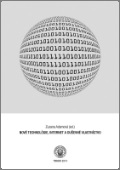Richard Bednárik
Full Text of Paper
- Source Type: Publication
- Document Type: Study
- Document Language: Slovak
- Published on: 2014
- File Format: PDF
- File Size: 112 kB
In: ADAMOVÁ, Z. (ed.) Nové technológie, internet a duševné vlastníctvo. Trnava: Typi Universitatis Tyrnaviensis, spoločné pracovisko Trnavskej univerzity v Trnave a VEDY, vydavateľstva Slovenskej akadémie vied, 2014, pp. 104-122. ISBN 978-80-8082-810-3.
Summary: Public licenses have become a widespread tool, which enables legal use and dissemination of protected content. Traditional copyright system is not suitable and adapted to the digital environment and inconsistent interpretations of certain provisions of the Copyright Act caused many problems in practice. Creative industry is an integral part of the economy of each state and is directly related to the various forms of inspiration. This paper aims to explain the issues related to the Creative Commons licenses as the most widely used type of public license, including the identification of major changes incorporated into the text of version 4.0. Important is to draw attention to the different areas of their use such as inspiration for further work, the proliferation of open educational resources, research dissemination and further spread of different kinds of software. Re-use of public sector information might be included in the above mentioned examples where public licenses can serve as an effective tool to disseminate datasets or different content generated by the public sector.
URL: http://ntidv.iuridica.truni.sk/archive/ntidv/NTIDV-Bednarik-Richard.pdf
Bibliographic Citation
BEDNÁRIK, R. Verejné licencie ako nástroj podporujúci kreatívnu tvorbu. In: ADAMOVÁ, Z. (ed.) Nové technológie, internet a duševné vlastníctvo. Trnava: Typi Universitatis Tyrnaviensis, spoločné pracovisko Trnavskej univerzity v Trnave a VEDY, vydavateľstva Slovenskej akadémie vied, 2014, pp. 104-122. ISBN 978-80-8082-810-3.
